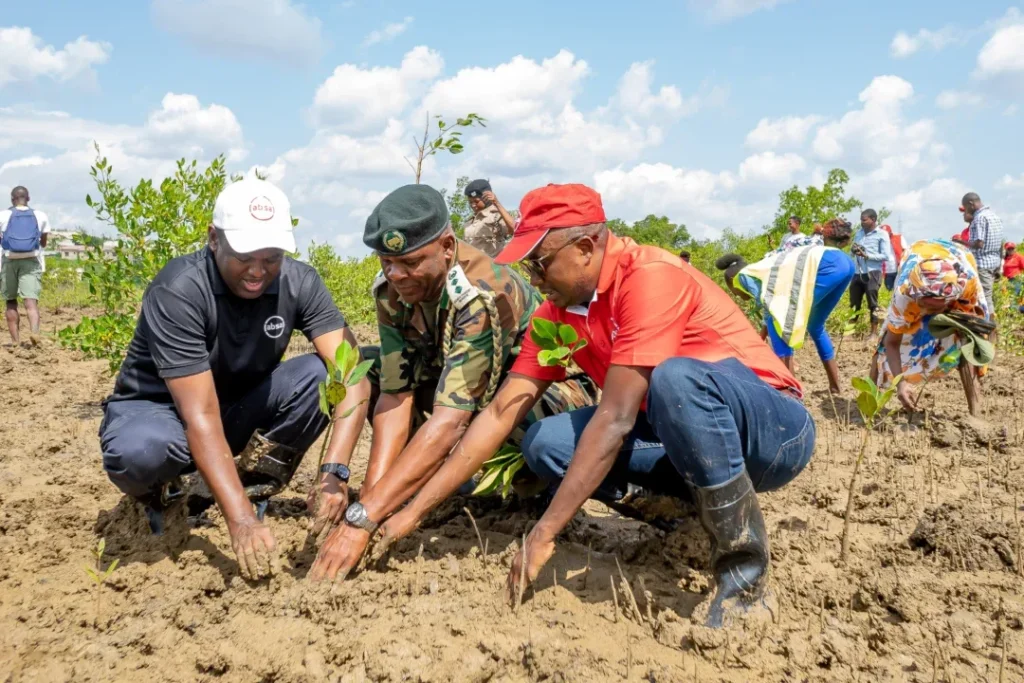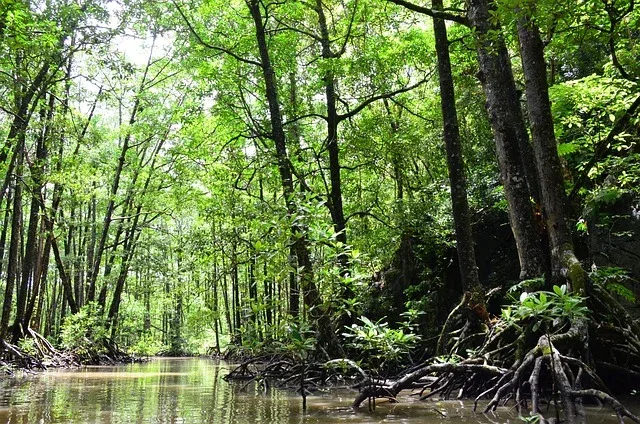Absa Bank Kenya has embarked on a 150,000-mangrove tree reforestation initiative at Jomvu Kuu and Majoreni Forests in Mombasa and Kwale Counties.
The initiative, undertaken in partnership with the Kenya Forestry Service, Bidii Creek Conservancy and Environmental Interaction Organization. It is aimed at preserving and safeguarding the fragile ecosystems along the coastline.
Christened the ‘lungs of our coastlines’, mangrove trees can absorb up to 900 tonnes of CO2 from the atmosphere every year. This means that they play an active role in combating the climate crisis. Mangroves also act as formidable barriers against natural disasters, specifically storms and tsunamis. This is due to the fact that their intricate root systems dissipate wave energy, reducing the impact on vulnerable coastal communities and minimizing the destruction caused by these catastrophic events.
It is against this backdrop that the bank’s reforestation efforts in the Coastal region also include partnering with local community-based organisations such as the Gazi Women Group in Kwale County aimed at saving the mangrove forests from extinction.
Earlier this year, the bank signed a Memorandum of Understanding (MOU) with Safaricom and the Kenya Forest Service. This was with an aim of adopting more than five degraded public forests across the country in a bid to reafforest them. These forests include Kaptagat Forest, South Kinangop Forest, Njukiini Forest, and Kwa Jomvu Forest, among others.

Absa Bank’s Managing Director Mr. Abdi Mohamed, said, “As an active force for good, we care about the communities around us and the environment in which we operate. We recognize the critical role that mangroves play in maintaining biodiversity, mitigating climate change, and protecting coastal communities from natural disasters. We therefore believe our initiative will not only enhance the natural beauty of our coastline but also provide numerous environmental benefits such as erosion control, water quality improvement, and the promotion of biodiversity. This year, we are targeting to plant over 1 million trees countrywide as part of our wider commitment to plant 10 million trees by 2025 and become a net zero organization by 2040. We believe our efforts will also scale the government’s efforts towards achieving 30 percent forest cover by 2032.”
Over the past two years, the bank has been planting trees in the Southern part of Aberdare Forest and the Mau Complex in partnership with the Kenya Forest Service, local Community Forest Associations and implementing partners such as Worldwide Fund for Nature (WWF). The bank is also on course to rehabilitate a section of the degraded 100-hectare Sorget Forest in Kericho County.

